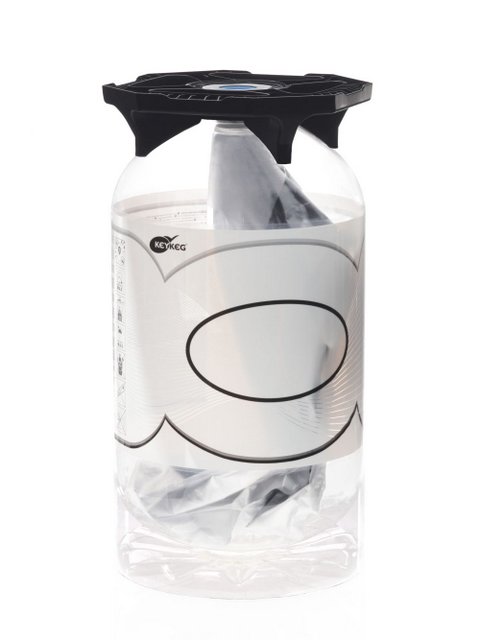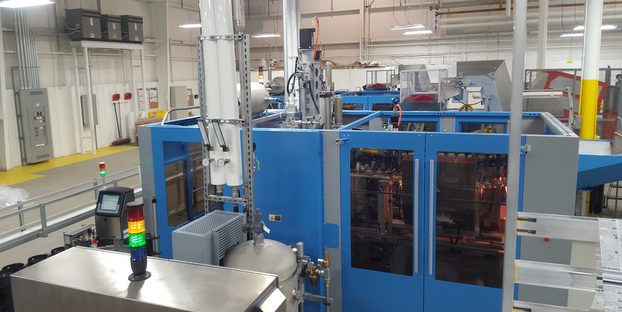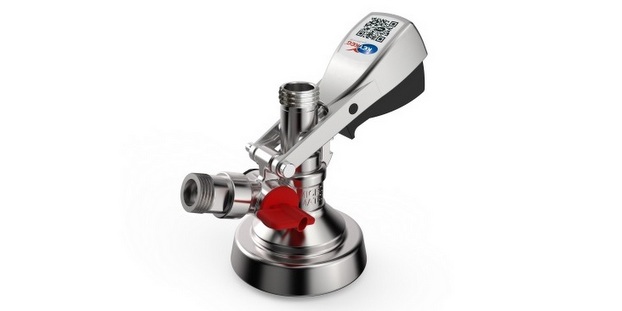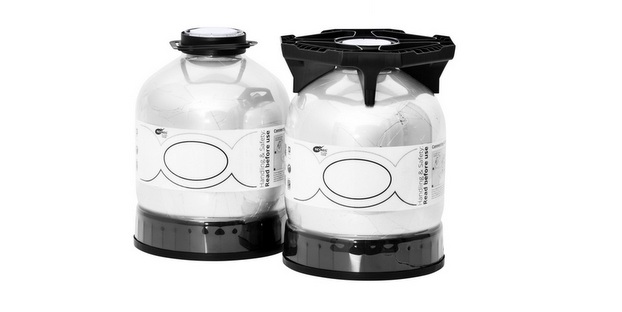
The metal keg is by far the standard of the industry, almost an iconic symbol of beer delivery, but that doesn’t necessarily mean it’s the most economical route for a growing brewer. Lightweight Containers, a supplier of one-way kegs called KeyKeg, aims to remove a lot of the responsibilities and sometimes reduce overall expenses of traditional keg systems.
For instance, if the distance between the brewery and the bars is longer, then a one-way keg is a better bargain. The break-even point will vary with the individual situation. There are savings in transport — up to 25 percent on the way to the bar and 100 percent on the return trip. If the distances are shorter, and if the kegs are returned very frequently, then steel kegs can work out to be cheaper (but that’s another story).
Supplementing its lineup, Lightweight Containers just announced a development for its one-way keg systems — the KeyKeg 30 Slimline — a cylindrical 30-litre keg fitted with both the KeyKeg Double Wall and Bag-in-Ball technologies. The new keg will be on the market in the first quarter of 2014.
The Double Wall technology, in which the container’s two walls work together dynamically, gives this new keg many improvements. The KeyKeg 30 Slimline can withstand even higher internal pressures than its predecessor, and is even more resistant to damage from the outside. Now, beers and sparkling wines with higher pressures can also be filled in one-way kegs. The Bag-in-Ball technology gives KeyKegs qualities similar to steel kegs. Beverages keep for weeks after broaching a KeyKeg.
“This new KeyKeg is the result of listening carefully to the total supply chain,” explained Jan Veenendaal, CEO of Lightweight Containers. “We developed the KeyKeg 30 Slimline working with beverage producers, distributors and bars. As a result, the entire supply chain perceives KeyKeg as a premium product, and producers want to associate their brand with KeyKeg. We print a lot of KeyKegs in the producer’s house style.”
Technical Director Bert Hanssen added, “It was quite a challenge to get the Double Wall and Bag-in-Ball technologies to work together optimally for this 30-litre version. We’re also way ahead with state-of-the-art PET technologies, like laser cutting and ultrasonic welding. So we had to experience and invent a lot on our own. Now, after six months of testing, refining and talking with customers, we’re done. The results are spectacular.’
The first one-way keg in the Slimline Series, the KeyKeg 20 Slimline, was introduced in November 2012. KeyKeg is working on rolling out two new Slimline production lines, one in Germany and one soon after in the United States. The Double Wall technology makes it possible to use recycled PET without loss of strength. Ultimately, the new KeyKeg 30 Slimline will consist of 58 percent recycled material. KeyKeg is striving to reuse the materials in its used KeyKegs to manufacture new KeyKegs.
Historically, the best-known type of keg has been the steel keg with a tube inside it called a “spear.” The propellant gas (CO2 or N2) pushes the beer or wine up through the spear to the dispensing valve. Exposure to the gas is what limits the product’s shelf life. The second type of one-way keg uses the more recent Bag-in-Ball technology. The beverage is contained in an inner bag, which prevents it from coming into contact with the propellant. This keeps the beverage good for weeks after broaching, and unbroached kegs have at least as long a shelf life as steel kegs.




Leave a Reply
You must be logged in to post a comment.